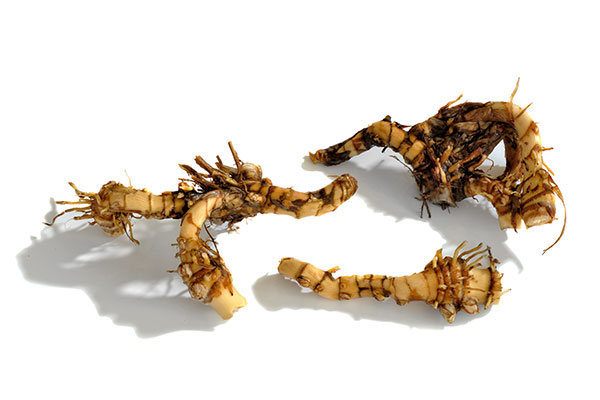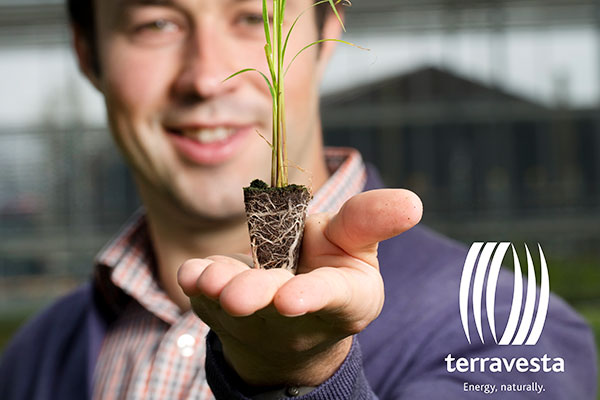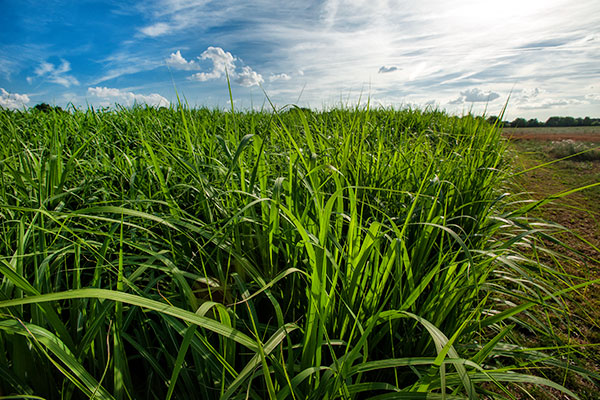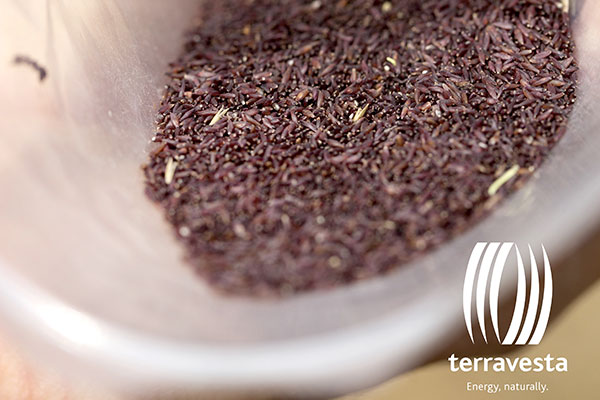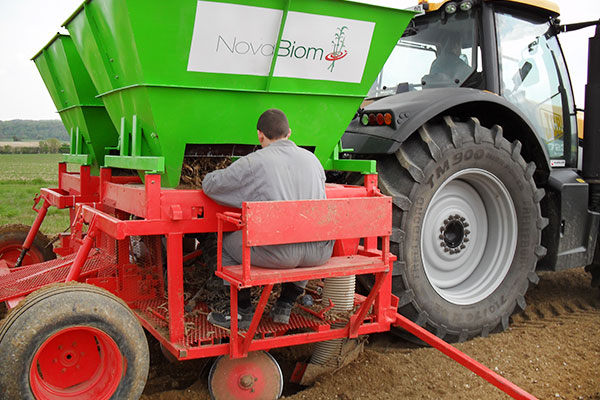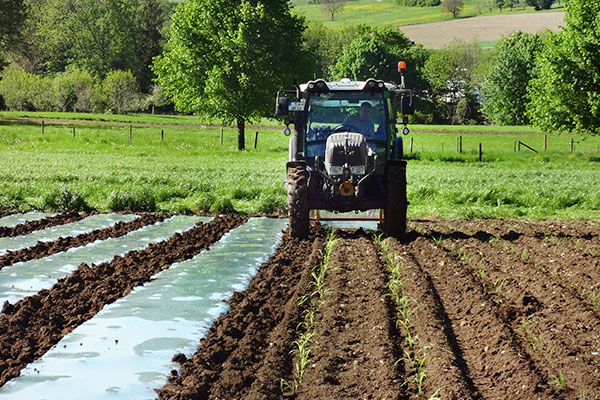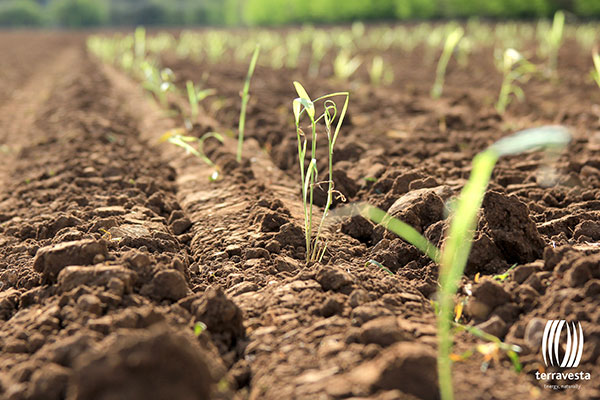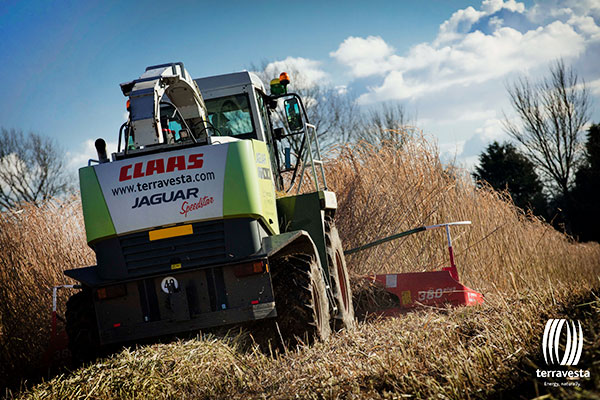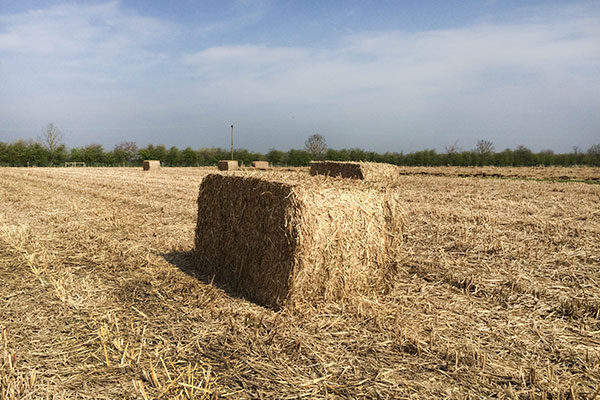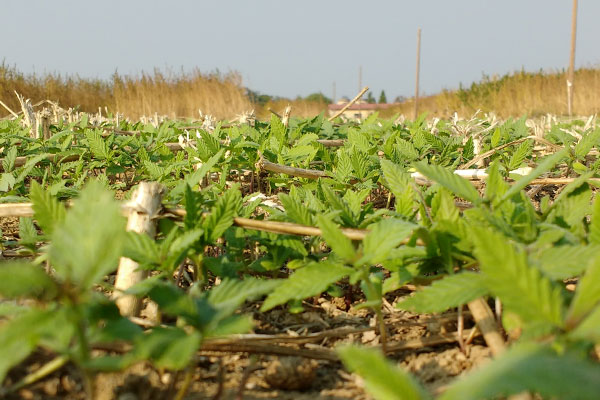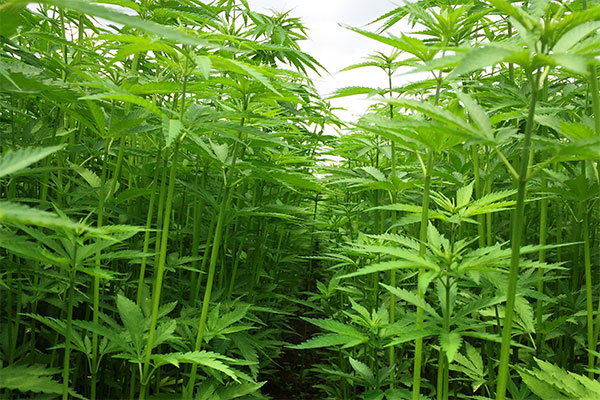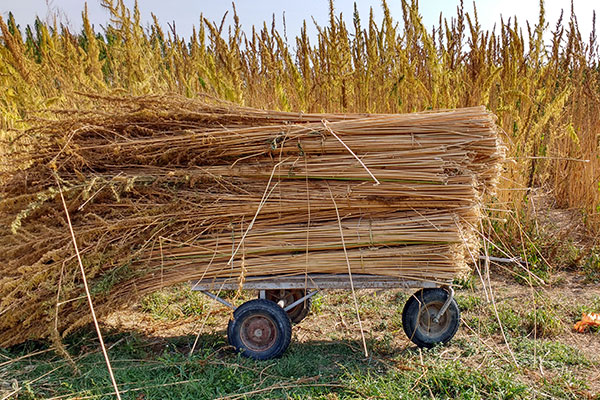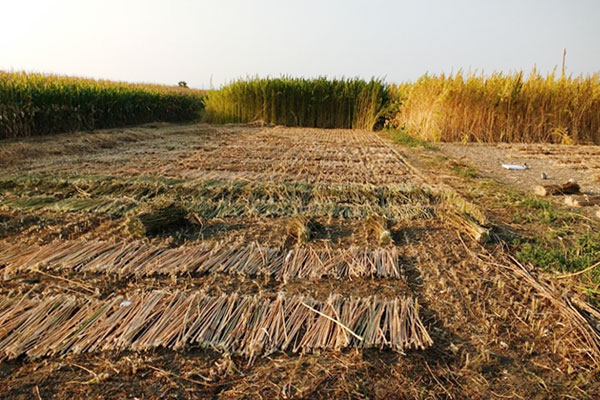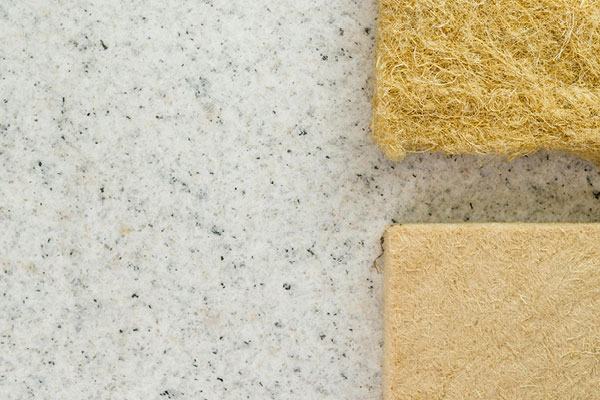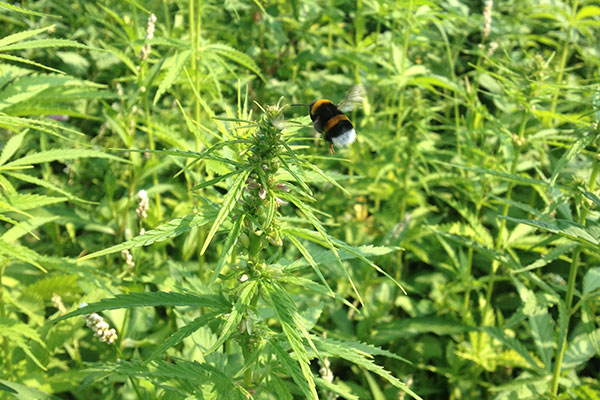Plants
Within the GRACE project, two biomass crops will be cultivated: miscanthus and hemp. These were chosen based on their distinctive characteristics, which render them a possible sustainable biomass source, and the quantity and quality of the biomass they produce.

Miscanthus
Miscanthus is a perennial C4 grass originating from South-East Asia. It is a very resource-efficient crop which, after a two-year establishment period, can yield up to 25 tonnes of dry matter a year in Central Europe. It can be harvested annually over a cultivation period of up to twenty years. The application of herbicides is only necessary during the establishment phase. Its biomass can be used for a wide range of utilization pathways including combustion, conversion to bioethanol, production of building materials and of basic chemicals.
Efficient Miscanthus nutrient cycle
Miscanthus recycles 40-60% of the nutrients from the aboveground biomass.
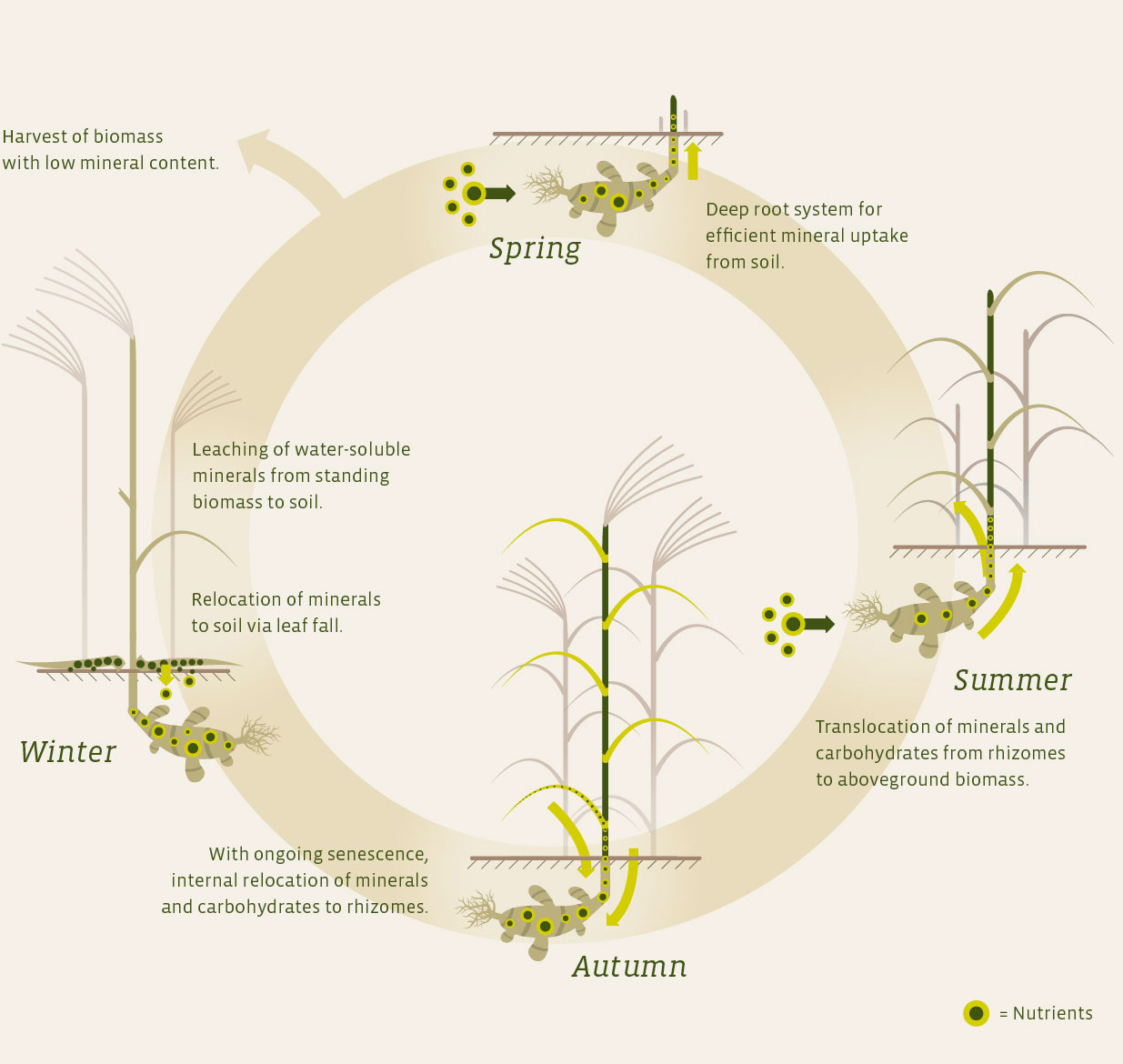
General Information Miscanthus
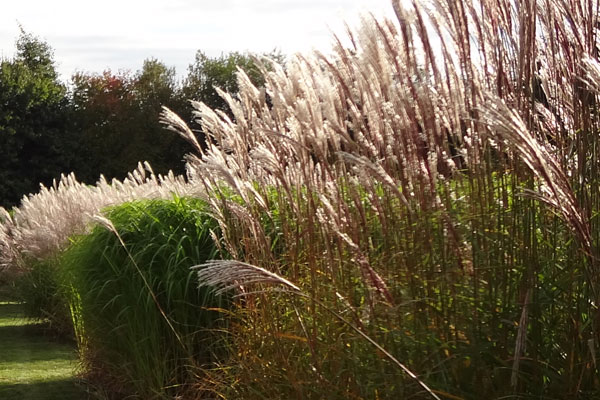
Order: Poales
Family: Poaceae
Subfamily: Panicoideae
Tribe: Andropogoneae
Genus: Miscanthus
Miscanthus is a genus with more than 15 species. The most important species for biomass production in Europe are Miscanthus sinensis and Miscanthus sacchariflorus. The virtually only commercially available variety is Miscanthus x gigantheus, a natural, sterile hybrid of Miscanthus sinensis and Miscanthus sacchariflorus.
Gallery Miscanthus

Hemp
Hemp is an annual crop, thus sown anew every year. Due to its rapid youth growth and the consequent fast covering of the soil, it suppresses weeds very effectively and thus requires no herbicide application. Hemp is a truly multi-purpose crop and its biomass can be used in a whole range of applications. Composites or building materials can be made from hemp fibres, the seeds can be used to produce bio-herbicides, and medical cannabidiol (CBD) can be extracted from the threshing residues.
General Information Hemp

Order: Rosales
Family: Cannabaceae
Genus: Cannabis L.
Hemp (Cannabis sativa, also called Cannabis indica) is one of the oldest crops known to mankind. It can be seen as an ‘on-field biorefinery’: its various fractions (e.g. fibres, shives, seeds) are each used for specific purposes. The seeds have a high oil and protein content. Although hemp is an annual crop, its production has a low environmental impact, since no pesticides are required.
Gallery Hemp
Funders
The GRACE project has received funding from the Bio-Based Industries Joint Undertaking (BBI JU) under the European Union’s Horizon 2020 research and innovation programme under grant agreement No 745012.
Bio based Industries Consortium

Bio based Industries Public-Private Parnership

European Union



